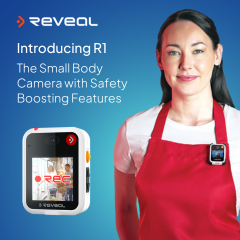Interview: reimagining the sofa buying experience
Having to wait eight weeks for the delivery of a new sofa, and to then find it did not fit through the flat’s doorway, led to the formation of an innovative direct-to-consumer (DTC) business pioneering the sofa-in-a-box concept.
This was three years ago and the sofa buyer Rob Bridgman, CEO & founder of Snug, was then working for his family’s business Bridgman Furniture. His radical idea to launch Snug fitted well with his situation as he had experience transitioning the company away from its wholesale model to a DTC business using its website and a small number of showrooms.
From wholesale to DTC
“I was naïve in thinking the upholstered sofa industry was the same as that of garden furniture [which Bridgman specialised in]. When the sun came out people expected to have it delivered immediately. The sofa experience wasn’t what I wanted. I was used to Deliveroo, Uber and Prime so why could I not buy a sofa with a couple of taps on the keyboard and have it delivered?” he asks.
Never Miss a Retail Update!Bridgman sought to create a solution that solved the major problems he’d identified: speed of delivery, portability of the sofa, visibility of the fulfilment process, and a decent choice of product features. Armed with his new concept he knew launching it into a crowded marketplace required defining a new category. Taking the lead from the ‘mattress-in-a-box’ players including Simba, Eve and Casper he called it ‘sofa-in-a-box’.
He also took inspiration from the likes of Made.com and Swoon who were challenger brands in the DTC furniture market and had cut out the middlemen retailers. However, the sofa industry proved to be a tough one to disrupt as shown by the unwillingness of manufacturers to produce the first Snug prototype. “They could see we were disrupting the eight-week delivery model and were too entrenched in this business model,” he says.
Overcoming resistance
Such resistance to change is exactly what Bridgman faced when adapting the model of the family firm back in 2010. “I had not intended to join the family business but I saw an opportunity as furniture was slow moving and antiquated. I was excited about bringing in a dynamic business model that moved it from manufacturing and wholesaling – with 300 retailer customers – to a more vertically integrated DTC business.”
Pressure had been increasing as new players were coming into the furniture market, creating a similar look to Bridgman, and manufacturing the products more cheaply. They then sold them direct to shoppers online. “Our retailers wanted more margin, more collections, and more flexible payment terms that put pressure on our margins and growth. We needed a new route to market and so we pushed into DTC,” he explains.
Although the company had been operating a website since 1998 (for purely informational purposes) Bridgman made it transactional in 2010 and moved away from supplying retailers. The company did sell through Amazon though and became its first drop-ship partner in the UK in 2012. It also opened a pop-up showroom on a short lease in 2013, which Bridgman says was a pioneering example of clicks & bricks.
Serious growth trajectory
Snug is clearly an extension of Bridgman’s work with the family firm and it does share some of the established business’s infrastructure including warehousing, distribution and access to the Bridgman showrooms in the south east of England. But he is clear it has a separate P&L and is on a “different trajectory”.
At first this trajectory was pedestrian – with Bridgman acknowledging that only one sofa was sold in the first month after launching in 2019. It has since built-up significantly, but in a manageable way: “We’re about sustainable growth and we’ve been profitable from month three.”
Although he won’t reveal actual sales and profit numbers Bridgman says they are “healthy for a two-year-old business with growth of both the top and bottom lines” and a team that has grown to 40 people. This will probably double in the next four months.
What he will reveal is that the 1,400% growth in revenue in 2020 and a forecasted increase of 700% this year should place Snug in the upper echelons of the forthcoming Sunday Times Fast Track 100 table. “We’re aiming for top 50,” he says.
Bridgman is also confident about the future prospects and expects Snug to attract repeat customers – despite the high ticket nature of sofas – as he points out they move on average every three-to-five years. As such their requirements change and the Snug products can change with this.
Pay-as-you-grow model
“It’s fully modular so you can reconfigure it. It’s like Lego. You can keep adding bits [like corner pieces], and taking bits off. It’s ‘pay-as-you-grow’ and it will grow and change with you. This does not exist at present [with the competition],” he explains, adding that the company is close to launching its third collection with more adaptable construction that can include storage and also offer conversion to sofa beds.
Although there is the potential to expand Snug into other categories Bridgman says this is not on the cards just yet: “We’re just scratching the surface with this product.” Whatever area he pushes the business into Bridgman remains convinced the DTC model is here to stay because he regards it as an “enabler for a new way of life” as e-commerce plays a prominent role.
Words by Glynn Davis













